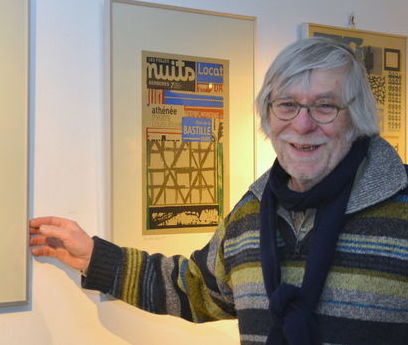Christiaan Paul Damsté, born in 1944 in Arnhem, is a Dutch painter, graphic artist and sculptor.
From 1962 to 1970, Damsté studied successively at the Academy of Fine Arts of Arnhem, the Royal Academy of Fine Arts of ‘s-Hertogenbosch and the Royal Academy of Fine Arts of Ghent. He taught from 1972 to 2005 at the art academies of The Hague, Arnhem and Amersfoort. He was a visiting lecturer at the Staatliche Kunstakademie in Düsseldorf in 1987 and 1989. Paul Damsté’s work is characterized, among other things, by a strict arrangement of image elements, in which rhythm, order and division of the surface are central. His very extensive oeuvre consists of countless etchings, lithographs, screen prints, many sculptures and objects with countless drawings, watercolors and paintings.
The early aquatinta etchings from Damsté are characterized by a balanced arrangement in the image surface, simplicity and a warm tone. In the early 1970s, the artist experimented with the etching process. He manually transferred shapes to the etching plate and combined these with image elements that were obtained in a photographic manner and were then etched in phases. In this way, expressive figurative photographic images were combined with free graphic expressions. The screen prints of Damsté evolved over the years from sheets with strictly ordered form units to sheets with a freer, more spontaneous handwriting. Damsté enjoyed working on the formal possibilities of certain themes such as landscapes and scrap heaps. Exploring such subjects resulted in graphics (especially woodcuts and screen prints) with a serial character. Various museums have included work by him in their collections, including the Municipal Museum of Contemporary Art in Ghent and Museum Boijmans van Beuningen in Rotterdam.
